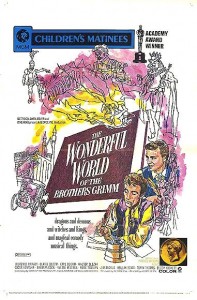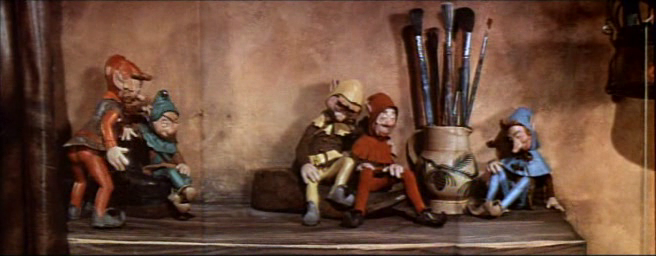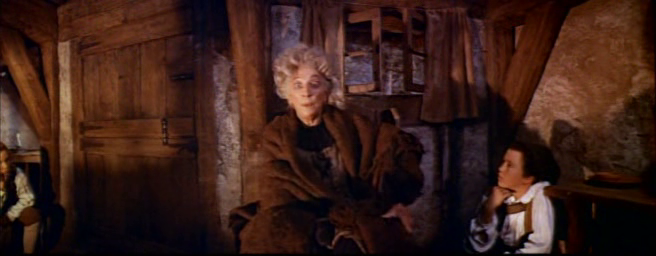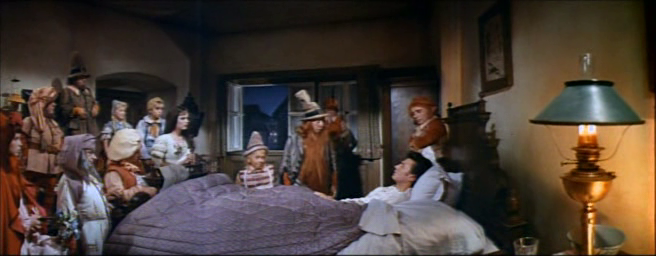Wonderful World of the Brothers Grimm, The (1962)
“I heard this little story… And while it was fresh in my mind, I thought I’d borrow it, for just a few minutes.”
|
Synopsis: |
|
Genres, Themes, Actors, and Directors:
Review: However, it’s Grimms’ fairy tales themselves that most viewers will be eager to see brought to life — though the stories selected to showcase here are lesser-known, and none are particularly compelling. The first tale (“The Dancing Princess”) primarily functions as a vehicle for Tamblyn’s dancing, as well as for the Cinerama process itself, with an extended carriage chase sequence far-too-obviously designed to show off what virtual reality tricks the camera could manage (i.e., Tamblyn dangles precariously down from a broken bridge hovering thousands of feet above a roiling river). The second tale (“The Cobbler and the Elves”) is primarily a vehicle for George Pal’s puppetoons, who come to vivid life during a modestly enjoyable musical sequence. The final tale — “The Singing Bone” — possesses a strong narrative arc and a nicely handled twist ending, but relies far too heavily on cartoonish slapstick for laughs (i.e., when the animated dragon breathes fiery air onto Hackett’s metal suit of armor, and hot steam emerges from Hackett’s nostrils). With all that said, TWWOTBG is the type of colorful, escapist fantasy fare that just might appeal to kids of a certain age — at least those not jaded by more sophisticated animation styles. Unfortunately, it’s not yet widely available on DVD, most likely because the only surviving print (which suffered from water damage during a studio fire) shows distractingly clear evidence of the dividing lines between the three filmed “panels”. Interestingly, this visual artifact is somewhat fascinating at first, given that it helps us more easily imagine seeing the movie projected onto a much larger, curved screen — but it’s ultimately too distracting, and definitely merits “cleaning up” by a restoration team. Redeeming Qualities and Moments:
Must See? Links: |




2 thoughts on “Wonderful World of the Brothers Grimm, The (1962)”
Not a must and rather in agreement with what’s written.
The main drawback in this film is that it is terribly dated and its stodginess overwhelms it. The dialogue is somewhat painfully pedestrian. The score – something which would normally elevate a film of this type – is forgettable. The performances are serviceable but can only offer so much, considering the limitations of the script. So, all told, we have something of a labored effort here. The time moves slowly indeed.
Recently restored on Blu-ray by Warner Brothers and it looks and sounds stunning.